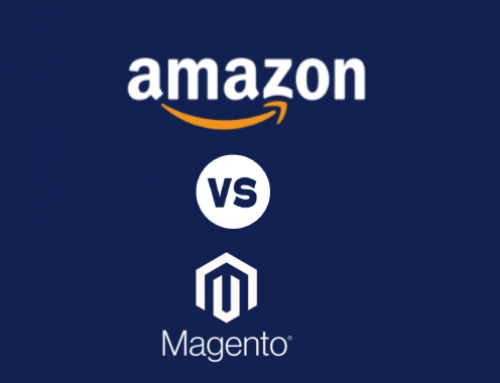Magento Customization : Its Brilliant In-built SEO Features
Magento is a great e-commerce platform that has created a revolution in the e-commerce industry. In case you are worried about the search engine ranking of your store, you need not worry about it. It allows online merchants to have online stores of their choice. Magento has brilliant in-built SEO features. Further, with Magento the online management of stores has become simpler and more effective. However you need to be an expert in configuring these settings so that you have a good ranking for your site or store.
Primary technological optimization
• General Design
It is said that Magento is SEO friendly platform. Yet there are cognitive content that you require to take care of it. You will find this setting under System => Configuration => Web => Search Engines Optimization. The first thing you need to do is get the latest version of the software program. Then, for getting started, modify Server URL rewrites. Another thing you can do is “Add store Code to URLs” under “URL Options”. In almost cases it is healthier to fixed this functionality to “No”.
• WWW versus non-WWW
Subordinate Un-secure and Secure one can discover the Basic URL, where one can set the preferred domain. Make sure the Base URL is the same as redirect. Editing the .htaccess data file, add the code to send the index.php to base word.
• Settings of Header
Magento Commerce is the title which is install by Magento and that is also by default. for your store keep the following things in mind.
• In case your keywords are at the start of your listing your page is more likely to get clicked on. People scanning result pages see the early words first.
• Usually the search engines put more weight on the early words, the page title you are more likely to rank well.
Go for Configuration => Design => HTML Head. Pick out a great as well as descriptive title for your business website. This title will be utilized for various non-content pages without custom-made title, e.g. Contact Us page and Popular Search Terms.
It’s better to keep the Prefix empty, for the reasons mentioned above. In order to add your store name to all page titles, Magento Module to add them to your head and improve your Magento SEO. Now we need to optimize the of your web-store pages it is a good idea to add the new canonical tag.
This can result in some very strange behavior in the search engines, so we’ll remove it. For some reason Magento turns non-set meta robots into a meta tag in this style:
• CMS Pages
One of the benefits offered by Magento is that you can control each aspect of the pages. At first instance you might feel that Magento lacks CMS functionality. If you wish you can keep the “Keywords” empty. Once you’ve given each CMS page some respectable easygoing, picking a SEF URL Symbol as well as page title. The description has one very important function: enticing group to click, just make it sure that it states what is in the page they are clicking towards, as well as that it gets their work. Go to the Meta Data tab to write a description for each CMS page that you actually want to rank with. Thus, the only well written description is a hand graphical same, as well as if you are reasoning of automatically bring forth the meta description, you might as well not do anything. In case you don’t use the meta description, and automatically pick a string around that, the search engine will find the keyword searched for in your document, which gives you a bolder word in the results page.
• Optimization of Category
Magento provides one the ability to add the name of categories to path for product URL’s. To do this, go to System => Configuration => Catalog => Search Engine Optimization and set “Use categories path for product URL’s to “no”. Because Magento does not support this functionality. It creates duplicate content issues and it is quite a good idea to disable this functionality.
Go to Catalog => Manage Categories. Now it is time to set the details for each category. The most important fields.
• URL Key :
Removing stop words like for,and,the, etc. is usually a good idea. Try to keep a brief but keyword rich URL. Also note that you can set this only for all store views, for a multiple language store you should keep it language independent. For multiple language stores this is really a great feature. For each store view you can define the Name, Page Title, Meta information, Description.
• Page Title :
When you customize it, the title will be exactly like your input, without the parent category. keep this empty to use the category name including parents categories.
• Meta Description :
Keep in mind that people will see, put an eye-catching description here; the description in the result listings of search engines.
• Products optimization
You can set the Meta Information for the Default Values and for each Store View. It is similar to the optimization of Categories.
By default the images will be renamed to the product title, the same for titles and alt tags. Under the tab “Images” of the Product Information you can set the label for each title tag. With some extra effort you can set the titles and alt tags for each product image. Of course you can do this for each specified Store View as well.
Writing good alt tags for images and thinking of how you name from the different image search engines. Images are often not given much importance when it comes to Magento SEO. Next to that, you’re helping out your lesser able readers who check out your site in a screen reader otherwise hidden.
Magento Template Optimization
• Magento Template Optimization of Blank Template
• Headings
• There is no reason to add “static” and keyword less titles with an
. The most important thing is to get the title of the content in an
tag. It is, for instance, better to change all the
tags in
to tags.
• On product pages, you should put the product name in an
. It doesn’t do this for style sheets though: the default template has six different style sheet files.
Duplicate Content And Advanced Magento SEO :
Besides that you have pages like the product review pages with almost the same content. In essence that means that, worst case scenario, a product is available on four pages at least next to the page where it should be available. Once you are clear with the primary cognition, you will discover the part of the troubles quantity to one simple thing: duplicate content. Another problem are classes of collections, you get a loading of matching content with stratified transportation and the sorting options. To get rid of all those matching content pools, by static permitting them to be spider-ed but not scaled and fix the categorization options and stratified shipping for product categories.
• For non-content pages No-index, move.
Now the search engine will follow all links on these pages but it won’t show those pages in the index. Install the meta module and make sure the settings prevent indexing of all non-content pages. It also supplies you an comfort to make easy payments.
• For Unnecessary links No-following
The same goes for the RSS feeds, stratified shipping, add to wish list, and add to likeness etc. You had probably have to go into your template files to add nofollow to those links by hand. Next, thing you can do to increase your Magento SEO is to stop linking to your login, checkout, wish-list, and all other non-content pages. Still there is no plugin for Magento to work this around.
• XML Site maps
You can create an XML site map manually by going to Catalog => Google Site map => Add Site map, choosing a file name, path as well as store prospect, and pushing Save as well as Generate key. But it may help you to get scale of measurement quick. These are an effortless way of holding search engines and know where the content of your site is, it won’t help you in ranking.
As your inventory changes, you’ll have to re-generate XML site maps. You can then simply put the following code in the robots.txt file to ingredient the engines of search to the site map.xml file also.
• Basic URLs
To understand the matching content of the pages you can advise the preferable version of the URL for every page, utilizing the new basic URL tag, so you should set up the Basic URL for Magento custom module. Online business provides you comfort of selecting any trade good you are perception for it. Although multiple-page checkout it takes users done through more pages, may provide a good sharing content.







